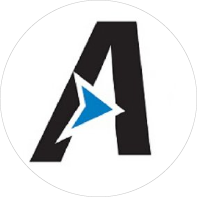Virtualization Overview
Among the many benefits of computer virtualization is the ability to consolidate multiple physical machines onto a single traditional server and do so in a remarkably speedy fashion. The net result equals a significant reduction in expenditures (lower hardware and energy costs) and a new centralized point of administration, which streamlines server management and increases the agility and efficiency of your IT organization. Achieving virtualization is neither costly nor difficult to implement. It requires only virtual machine software and a physical server that meets the requirements set by the VM software manufacturer. Some of the salient benefits of virtualization are as follows:
- Minimizes server sprawl and IT infrastructure footprint
- Environmentally conscientious technology (less hardware equals lower cost and lower power consumption)
- Streamlines server management and improves IT operational efficiency
- Rapid return on investment
- Enormously scalable and flexible, yet simple to implement
- Seamless interoperability with existing voice and data networks
Layers of a Virtual Fax Server
The layers of a virtual server are analogous to building blocks (Figure 1). The base layer represents the host server – a traditional server – and the lone piece of required local hardware. It consists of some computer chassis and associated internals and an operating system supported by the virtual server platform. The remaining layers are software-based (Table 1 and Figure 1). Virtual Server Layer Hypervisor layer the application platform that allows for the creation and management of virtual machines. Installed on the operating system that resides at the base layer. Virtual Machine layer the virtual machine created by the hypervisor platform. Represented by a virtual hard disk file. Operating system layer The Windows Server® OS that is installed within the VM and where RightFax is installed. Application layer the most figurative of the layers described, it represents the RightFax installation and all its associated Windows services.
Server Consolidation Concept
Below is a conceptual graphic demonstrating how a single physical server can support many virtual servers. Only the VM platform and the ‘horsepower’ of the host server govern or otherwise limit the total number of virtual servers. High performance servers and those with specialized CPUs (e.g., AMD-V™ and Intel® VT-x) that optimize virtual machine performance promise to make virtualization an elegantly simple solution to the rampant problem of server sprawl.
The concept of consolidation and server virtualization is made possible by one of the great technologies of our time – virtual hard disks. A virtual hard disk:
- Is a vendor-specific file such as .VHD or .VMDK
- Emulates a physical hard disk and contains what is normally found on a physical hard disk
- This architecture is responsible for the concept of server virtualization as we know it today
Virtual Fax Server Requirements
In general, a virtual server behaves like a traditional server, which provides substantial interoperability and compatibility with third party applications. RightFax supports VMware ESX and ESXi server 3.0.1 or later, VMWare, VMotion, Citrix® Xen Server 6.2 or later, and Microsoft Hyper-V. Virtual fax servers must reside on platforms that meet the minimum requirements as documented by virtualization software vendors. OpenText recommends dedicating a virtual machine to each fax server. It’s important to note that a virtual fax server is unable to support physical fax board hardware. It is possible to utilize RightFax dialing rules and a separate physical server with a physical fax board to route faxes to and from a virtual server over your network. However, in that scenario some of virtualization benefits are sacrificed as you would still be reliant upon that physical fax board installed in a physical server. This is where the power of Fax over IP and the Dialogic SR140 board emulation software comes into play.
Fax over IP Overview
实时FoIP是基于国际Telecommunications Union (ITU) standard T.38, which describes the technical features necessary to transfer facsimile documents in real time between two standard Group 3 facsimile terminals over the Internet or other networks using IP protocols. T.38 is the preferred FoIP protocol, as it aligns with the behavior of faxes over the Public Switched Telephone Network (PSTN). As with the T.30 standard (what fax machines use), the IP fax transmission is handled like a traditional fax call and an end-to-end communication is established. A fax server that sends or receives faxes using T.38 looks just like any other non-FoIP fax device to its partner. The two end points establish a session, send and verify the transmission of one or more pages and then complete the session with active confirmations from both sides. The difference with a FoIP-enabled server is that the first part of the communication session from the server to the network traverses an IP network rather than traveling directly over the PSTN. If the partner device is directly addressable on the same network, the session can use T.38 for the entire transmission. If the telephone line separates the devices, the IP switch manages the “unwrapping” of T.38 packets into standard T.30 fax transmissions over the PSTN.
This is part 2 of a 5 part white paper series.
To download the full series, click the link below.
Join Our Newsletter
Quick Links
Popular Resources
Contact Us
If you would like to learn more or speak to one of our dedicated RightFax experts, please contact us using the request button below or call us directly at 866-730-1700.
Register for Exclusive Access to the
RightFax Resource Center
Sign-up to learn the ins and outs of your RightFax system and become an expert.


